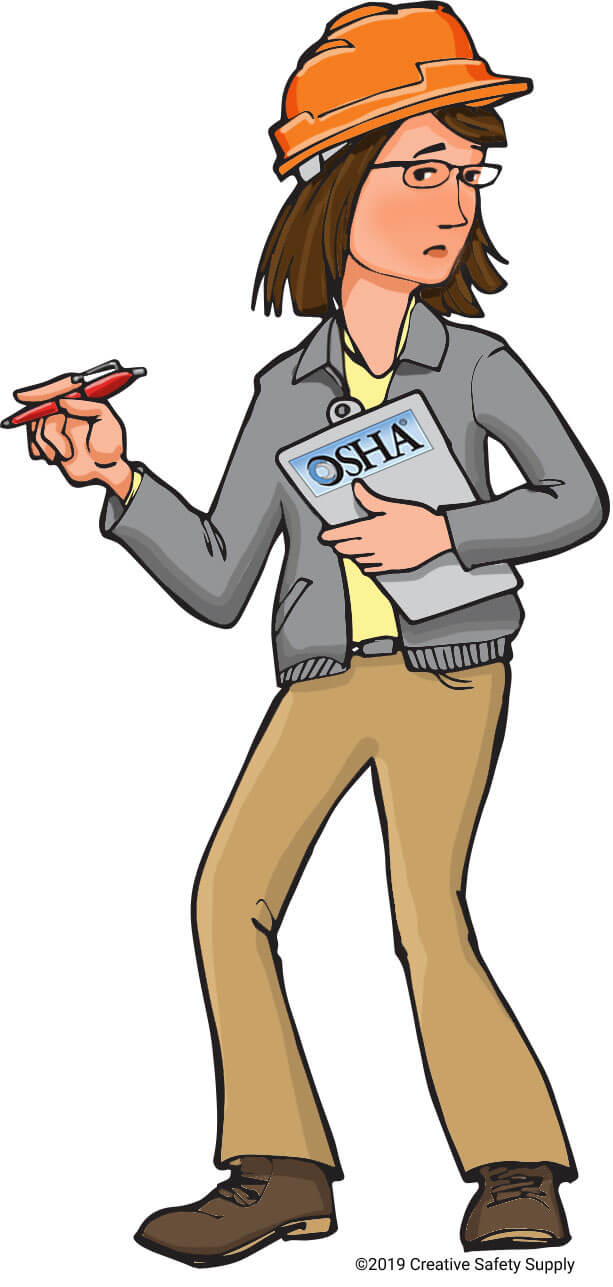

OSHA is an acronym for the Occupational Safety and Health Administration, a governmental agency part of the United States Department of Labor. The agency was established under the Occupational Safety and Health Act, an act signed into law by President Nixon in 1970. The majority of private sector and employers are covered by the OSHA act, as well as a number of public sector employers and workers in the 50 states and certain territories and jurisdictions under federal authority (such as the District of Columbia, Puerto Rico, the Virgin Islands, etc.).
OSHA Standards & Requirements
Under OSHA law, employers have the responsibility and obligation to provide a safe workplace. This includes providing workers with a workplace that does not have serious hazards and adhering to the safety and health standards that OSHA has set forth. Employers are required to properly train employees, keep accurate records, perform tests to ensure a safe workplace, provide PPE at no cost to the worker, provide medical tests when required by standards, post OSHA citations annually, notify OSHA of fatalities and injuries, and not retaliate or discriminate against a worker. These are just an outline of obligations, for more information on employer responsibilities, check out OSHA’s requirements.
Workers on the other hand are guaranteed to rights. These rights include working conditions that do not pose a risk of serious harm, the right to file a confidential compliant complaint, receive information and training, receive copies of test results, participate in an OSHA inspection, and file a complaint if retaliated against. For more information on the rights workers are guaranteed to, take a look at OSHA’s Worker Rights and Protection webpage.
OSHA has set forth several standards regarding the safety of a facility, and they enforce these standards with inspections. Compliance Safety and Health Officers carry out these inspections and assess for regularity violations that may result in fines. OSHA uses inspections to enforce regulations in an effort to reduce workplace injuries, illnesses, and fatalities. Although most are planned ahead of time, it is important to be prepared for a surprise OSHA inspection.
Additional OSHA facts:
- The Occupational Safety and Health Administration (OSHA) is part of the United States Department of Labor. The administrator for OSHA is the Assistant Secretary of Labor for Occupational Safety and Health. OSHA’s administrator answers to the Secretary of Labor, who is a member of the cabinet of the President of the United States. Source: https://www.osha.gov/aboutosha
- OSHA was created by the Occupational Safety and Health Act of 1970, which was signed by President Richard M. Nixon on December 29, 1970. The act was intended to ensure safe and healthful working conditions for workers by setting and enforcing standards, and by providing training, outreach, education and assistance. Source: https://www.osha.gov/aboutosha
- The first Assistant Secretary of Labor for OSHA was George Guenther, who served from 1971 to 1973. He was followed by John H. Stender, Morton Corn, Eula Bingham, Thorne G. Auchter, John A. Pendergrass, Gerard F. Scannell, Joseph A. Dear, Charles N. Jeffress, John L. Henshaw, Edwin G. Foulke Jr., David Michaels, Loren Sweatt, James Frederick, and Douglas L. Parker. Source: https://www.awrf.org/10-facts-about-osha/
- OSHA covers most private sector employers and their workers, in addition to some public sector employers and workers in the 50 states and certain territories and jurisdictions under federal authority. Those jurisdictions include the District of Columbia, Puerto Rico, the Virgin Islands, American Samoa, Guam, Northern Mariana Islands, Wake Island, Johnston Island, and the Outer Continental Shelf Lands. Source: https://www.osha.gov/aboutosha
- OSHA also allows states and territories to develop and operate their own occupational safety and health programs, known as State Plans. Currently, there are 22 State Plans covering both private sector and state and local government workers, and six State Plans covering only state and local government workers. Source: https://www.osha.gov/aboutosha
- OSHA has about 2,100 inspectors, plus complaint discrimination investigators, engineers, physicians, educators, standards writers, and other technical and support personnel spread over more than 200 offices throughout the country. This staff is responsible for the health and safety of more than 130 million workers, employed at more than 8 million worksites around the nation. Source: https://worksafesolutions.com/osha-facts
- OSHA issues standards for a wide variety of workplace hazards, such as asbestos, bloodborne pathogens, confined spaces, electrical hazards, fall protection, hazardous chemicals, machine guarding, noise, personal protective equipment, and respiratory protection. Source: https://www.osha.gov/aboutosha
- OSHA also enforces the whistleblower provisions of 24 statutes protecting employees who report violations of various workplace safety and health, airline, commercial motor carrier, consumer product, environmental, financial reform, food safety, health insurance reform, motor vehicle safety, nuclear, pipeline, public transportation agency, railroad, maritime, securities, and tax laws. Source: https://www.awrf.org/10-facts-about-osha/
- OSHA also recognizes and promotes effective safety and health management systems through cooperative programs, such as the Voluntary Protection Programs (VPP), the Safety and Health Achievement Recognition Program (SHARP), the Strategic Partnership Program (SPP), and the Alliance Program. Source: https://www.osha.gov/sites/default/files/publications/all_about_OSHA.pdf
Similar Questions
- Are OSHA regulations considered the law?
- Who is OSHA meant to protect?
- What agency of government is OSHA in?
- What does it mean to be OSHA compliant?
- How does OSHA affect a business?
- How does OSHA work?
- How are violations reported to OSHA?
- What OSHA posters are required?
- Are OSHA inspections random?


